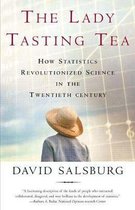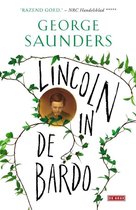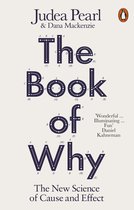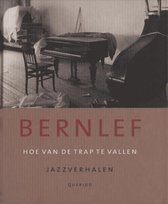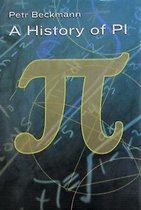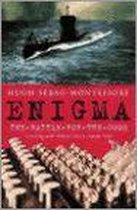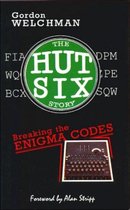The Theory That Would Not Die How Bayes' Rule Cracked the Enigma Code, Hunted Down Russian Submarines, and Emerged Triumphant from Two Centuries of Controversy
Afbeeldingen
Sla de afbeeldingen overArtikel vergelijken
- Engels
- Paperback
- 9780300188226
- 25 september 2012
- 360 pagina's
Samenvatting
A New York Times Book Review Editor’s Choice: A vivid account of the generations-long dispute over Bayes’ rule, one of the greatest breakthroughs in the history of applied mathematics and statistics
“An intellectual romp touching on, among other topics, military ingenuity, the origins of modern epidemiology, and the theological foundation of modern mathematics.”—Michael Washburn, Boston Globe
“To have crafted a page-turner out of the history of statistics is an impressive feat. If only lectures at university had been this racy.”—David Robson, New Scientist
Bayes’ rule appears to be a straightforward, one-line theorem: by updating our initial beliefs with objective new information, we get a new and improved belief. To its adherents, it is an elegant statement about learning from experience. To its opponents, it is subjectivity run amok.
In the first-ever account of Bayes’ rule for general readers, Sharon Bertsch McGrayne explores this controversial theorem and the human obsessions surrounding it. She traces its discovery by an amateur mathematician in the 1740s through its development into roughly its modern form by French scientist Pierre Simon Laplace. She reveals why respected statisticians rendered it professionally taboo for 150 years—at the same time that practitioners relied on it to solve crises involving great uncertainty and scanty information (Alan Turing’s role in breaking Germany’s Enigma code during World War II), and explains how the advent of off-the-shelf computer technology in the 1980s proved to be a game-changer. Today, Bayes’ rule is used everywhere from DNA de-coding to Homeland Security.
Drawing on primary source material and interviews with statisticians and other scientists, The Theory That Would Not Die is the riveting account of how a seemingly simple theorem ignited one of the greatest controversies of all time.
Productspecificaties
Inhoud
- Taal
- en
- Bindwijze
- Paperback
- Oorspronkelijke releasedatum
- 25 september 2012
- Aantal pagina's
- 360
- Illustraties
- Nee
Betrokkenen
- Hoofdauteur
- Sharon Bertsch Mcgrayne
- Hoofduitgeverij
- Yale University Press
Overige kenmerken
- Extra groot lettertype
- Nee
- Product breedte
- 159 mm
- Product hoogte
- 25 mm
- Product lengte
- 235 mm
- Studieboek
- Ja
- Verpakking breedte
- 156 mm
- Verpakking hoogte
- 27 mm
- Verpakking lengte
- 238 mm
- Verpakkingsgewicht
- 523 g
EAN
- EAN
- 9780300188226
Je vindt dit artikel in
- Categorieën
-
- Mens & Maatschappij
- Wetenschap & Natuur
- Religie, Spiritualiteit & Filosofie
- Psychologie
- Politiek
- Sociologie
- Methodologie
- Filosofie
- Wetenschap algemeen
- Wiskunde
- Onderzoek & Statistiek
- Geschiedenis van de wetenschap
- Filosofie van de wiskunde
- Geschiedenis van de wiskunde
- Kansrekening & Statistieken
- Boeken
- Taal
- Engels
- Beschikbaarheid
- Leverbaar
- Boek, ebook of luisterboek?
- Boek
- Studieboek of algemeen
- Algemene boeken
Reviews
Negatief, positief, neutraal: we zetten een review altijd online. We controleren wel eerst of ’ie voldoet aan onze reviewvoorwaarden en niet nep is. We controleren ook of ’ie is geschreven door iemand die het artikel heeft gekocht via bol.com en zetten dit er dan bij. De controles gebeuren automatisch, al kijken er soms mensen mee. Bol.com betaalt niet voor reviews. Als een reviewer door een andere partij is vergoed, staat dit in de review zelf.
Negatief, positief, neutraal: we zetten een review altijd online. We controleren wel eerst of ’ie voldoet aan onze reviewvoorwaarden en niet nep is. We controleren ook of ’ie is geschreven door iemand die het artikel heeft gekocht via bol.com en zetten dit er dan bij. De controles gebeuren automatisch, al kijken er soms mensen mee. Bol.com betaalt niet voor reviews. Als een reviewer door een andere partij is vergoed, staat dit in de review zelf.
-
Erg overdreven
Positieve punten
- Heldere boodschap
Negatieve punten
- veel bias
De schrijfster doet erg haar best om de Bayes schatting in een fraai licht te zetten. Echter Bayes is ook maar een schatting en niet veel beter dan andere (want niemand kan de toekomst voorspellen).
Vond je dit een nuttige review?122
Kies gewenste uitvoering
Prijsinformatie en bestellen
De prijs van dit product is 15 euro.- Gratis verzending door bol vanaf 20 euro
- Ophalen bij een bol afhaalpunt mogelijk
- 30 dagen bedenktijd en gratis retourneren
- Dag en nacht klantenservice
Vaak samen gekocht
Rapporteer dit artikel
Je wilt melding doen van illegale inhoud over dit artikel:
- Ik wil melding doen als klant
- Ik wil melding doen als autoriteit of trusted flagger
- Ik wil melding doen als partner
- Ik wil melding doen als merkhouder
Geen klant, autoriteit, trusted flagger, merkhouder of partner? Gebruik dan onderstaande link om melding te doen.

